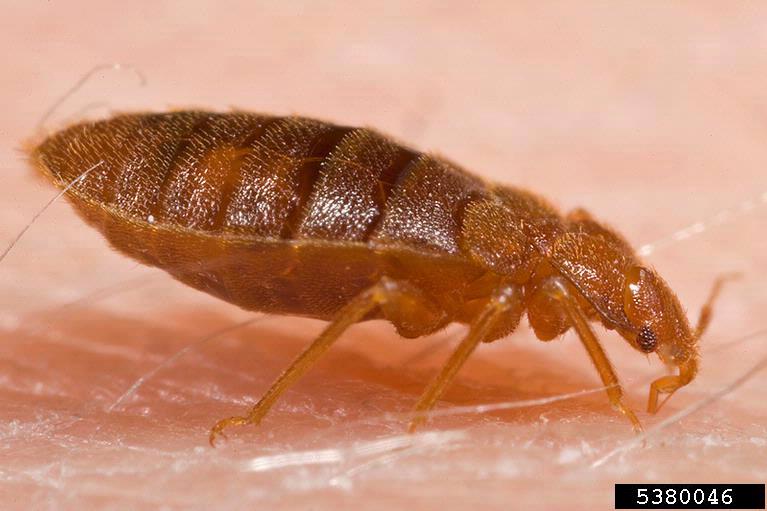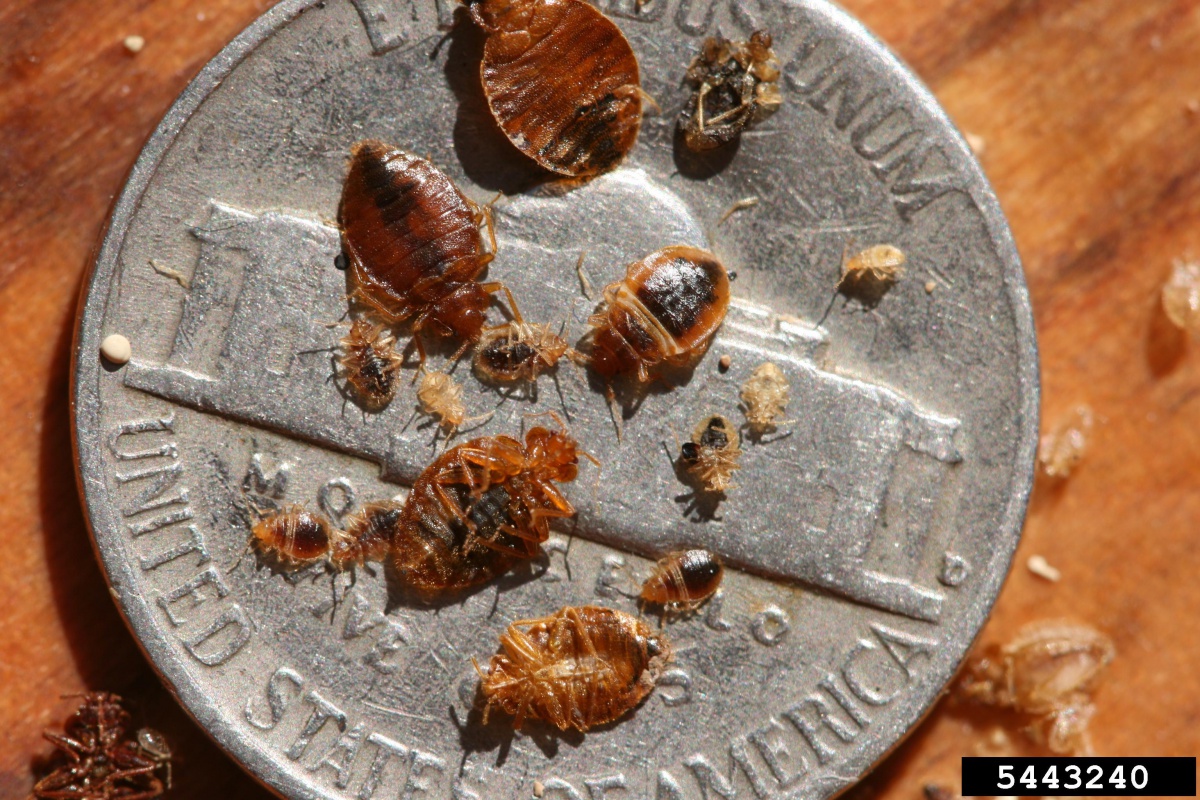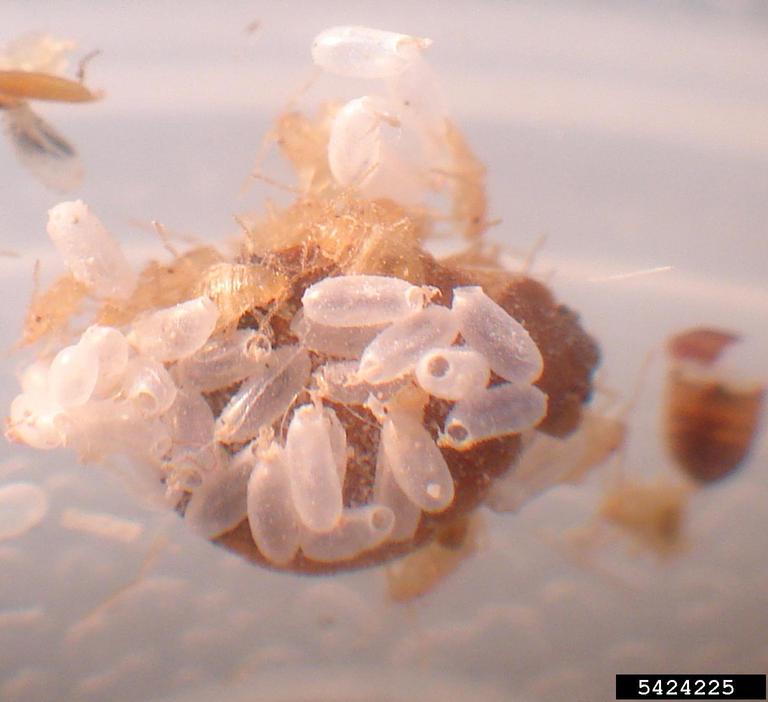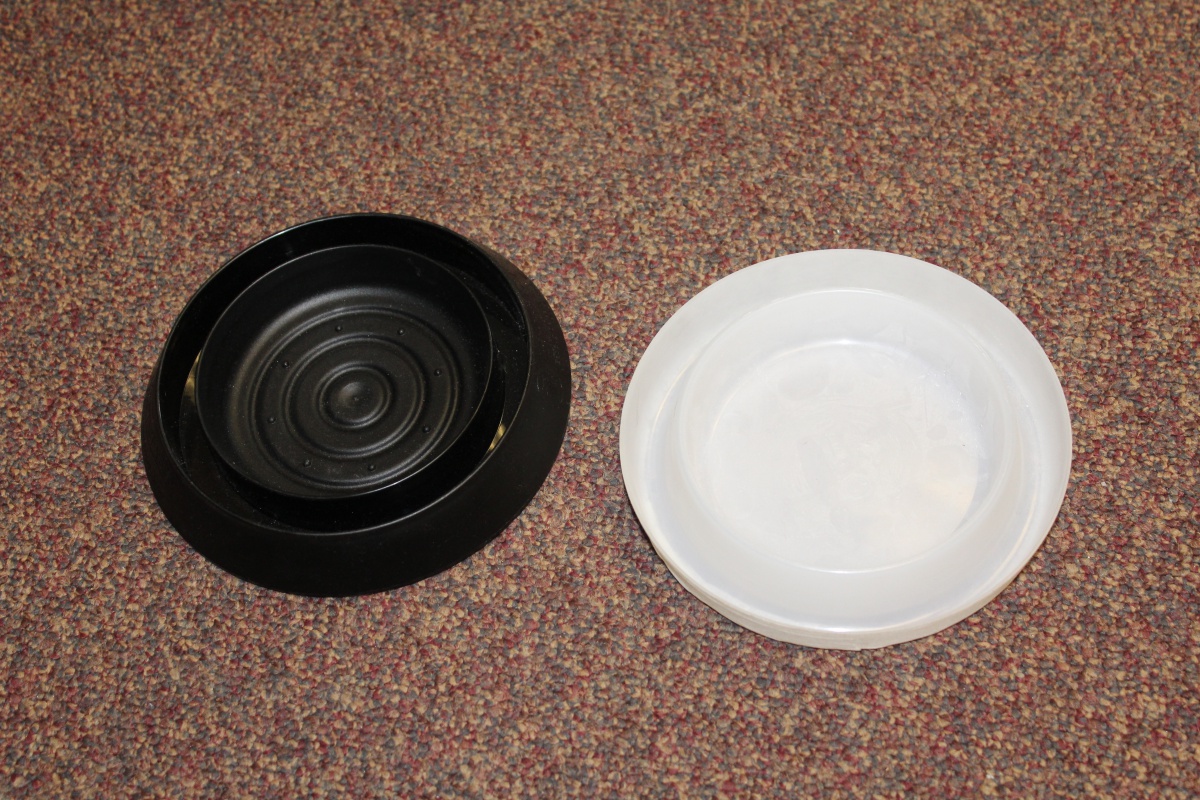Pest Fact Sheet
Introduction
From fossil remains in ancient Egypt, we know that the common bed bug, Cimex lectularius, has troubled humans in their sleep for at least 3550 years. Both males and females feed exclusively on animal blood. Besides humans, bed bugs bite dogs, cats, birds, rodents, rabbits, and other pets. They are not known to transmit diseases, but as they feed, bed bugs inject substances (ex. anticoagulants and analgesics) that can cause irritation, welts, swelling, and extreme itching in sensitive individuals. Less than half of those bitten will have visible bite marks and such symptoms do not appear immediately, requiring four days or more to develop.
Many thought bed bugs were eradicated after WWII, however in 1999 bed bugs were found infesting up-scale hotels and then homes. Today Cimex lectularius and related species infest homes, apartments, schools, camps, movie theaters, office buildings, and all modes of transportation throughout New Hampshire. They and their cousins (bat and swallow bugs) cannot fly – they lack wings – and so rely on us to move them from place to place. They are secretive, feeding at night when their hosts are fast asleep, and retreating to cracks and crevices in walls and furniture or folds and tufts of bedding (mattresses and box springs) during the day. Although adult bugs are large enough (1/4 inch and flattened) to be easily seen, eggs and hatchlings are tiny (1 mm in length). Females glue their eggs to stationary (furniture) and movable items (purses, backpacks, luggage, computer bags, clothing, shoes, etc.) aiding their dispersal.
Telltale signs of bed bug infestation include digested bloodstains – dark specks of excrement (which look like coffee grounds) absorbed into wood or fabric. Small, cylindrical, pearl-white eggs often accompany these droppings. Severe infestations have a sweet, musty odor.

Description and Life Cycle
Adult bed bugs are the size (1/4 inch) and color of apple seeds and are highly flattened. They are so flat that they can hide in any crack or crevice into which you can insert a business or playing card. After a blood meal, a bed bug resembles an apple seed in shape (as well as color and size) as it becomes engorged with blood. All stages feed on blood and a blood meal is required to grow to the next stage or lay eggs.

Like all true bugs (Hemiptera), bed bugs have piercing-sucking mouthparts, with a three segmented beak. Their antennae are four segmented and their pumpkin seed shaped body has two small wing pads (vestigial wings). At room temperature and with access to hosts for regular feedings, female bed bugs may lay two to five eggs per day and 200-500 over her six to 18 month lifespan. The white, one millimeter-long eggs are laid singly and have a cap at one end. Eggs are the most durable stage. They hatch in a week or two under favorable conditions, but can easily last a month. Young bed bugs are called nymphs and resemble adults in all ways except color and size. Nymphs molt five times before reaching maturity and become darker as they mature. Under ideal conditions bed bugs can go from egg to adult in as little as five weeks, but if no hosts are available or temperature is low they can survive for 1½ to 2 years! Note that this means you cannot kill bed bugs by starving or freezing them.

Management
The key to bed bug control is finding and eliminating every last bug. This is a very arduous task because of their dispersive nature and cryptic behavior. Insects that are out in the open are easily controlled. Successful bed bug control with chemicals requires the use of residual materials that kill bugs that contact this dry deposit long after it was applied. However, effective long-lasting chemicals have yet to be found for professional use and – even if they were – would not be available to homeowners. Therefore – unless you are extremely vigilant and committed – bed bug control is NOT a do-it-yourself job!
All pest control companies are not the same and this is not a task for the lowest bidder. Choose a pest management professional experienced in bed bug control, preferably one that is a certified bed bug control expert. At this point, the only independent certifying entity is Bed Bug Central – so look for a “Bed Bug FREE” company (you can find a company in your area by visiting: www.bedbugcentral.com).
You can, however, improve the chances of prompt control, early detection, and prevention by simplifying the area around your bed. Don’t store anything under your bed. Remove clutter from the floor. Check your bed carefully (and remove at least temporarily infested headboards, bookcases, and nightstands – seal these inside large plastic bags). Enclose your mattress and box spring in dust mite proof encasements. DON’T dispose of bedding or furniture unless you are told to do so! The bugs will die inside these covers. Put traps under each bed leg to catch bugs going to or from the bed. Be sure to cut off alternative routes to the bed by moving the bed away from the wall and keeping bed covers from touching the floor.

The best means of bed bug control are physical – removing (vacuuming, sticking to tape, squashing), killing with heat, and trapping. Be sure to dispose of the vacuum bag in the outside trash after vacuuming bed bugs. Heat involves laundering (washing and drying) anything suspected of harboring bed bugs. Those things that cannot be washed can be placed in a hot drier (for 20 minutes). Be sure to place all washable (or dryable) items directly into these machines and dispose of the bag (again, in outside trash). Larger items can be steamed with an upholstery steamer. Freezing items by placing them outside will not help. Bed bugs have been known to survive for up to two years, so attempts to starve them by sleeping somewhere else or putting bedding in storage will not help.
Prevention
The best means of prevention involve education – knowing the enemy. Your vigilance and ability to adapt habits and routines to this bug are you best defenses. Don’t salvage discarded furniture. Be careful when purchasing or renting furniture (it is delivered in the same truck used to pick up other people’s discards and returns?). Don’t store items under or next to your bed. Be careful when traveling. Don’t unload or load your suitcase on any bed. When you have guests hang their coats in a closet – don’t place them on a bed. Install bed leg traps under each leg of the bed. Encase your mattress and box spring, if you are very concerned or travel a lot. Consult a reputable website like Bed Bug Central (www.bedbugcentral.com) for further tips.
Download the Resource for the complete fact sheet and a printable version.

